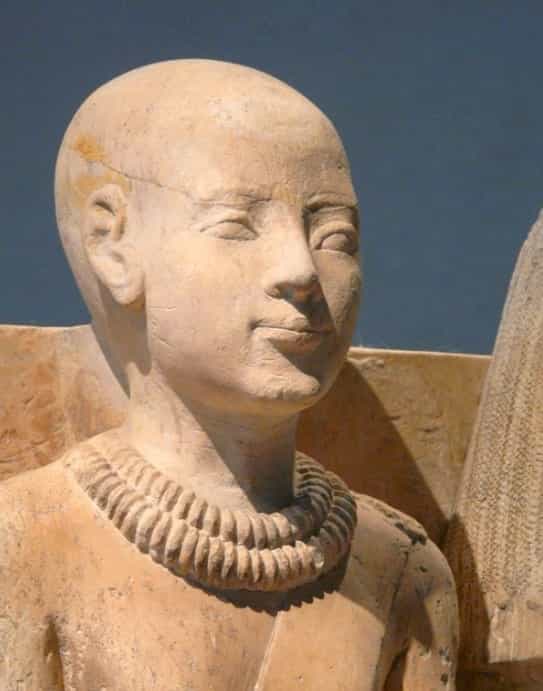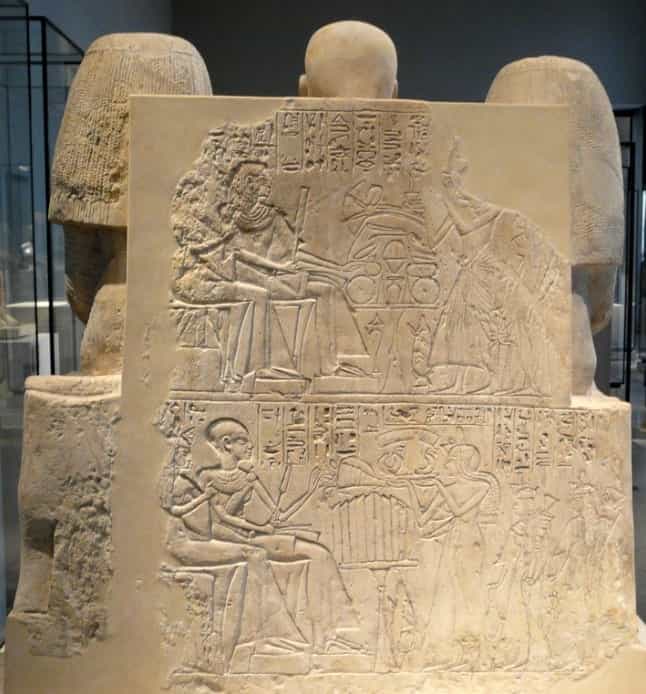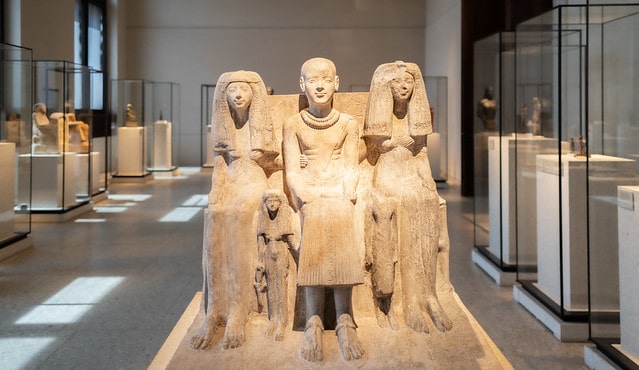In this ensemble of statues, which possesses a distinctly monumental quality, the status of the family within the social fabric of Ancient Egypt is immortalized in enduring artistic form.
Positioned at the center is Ptahmai, flanked by his wife Hatshepsut seated to his left, and his daughter to the right. Standing between these central figures are Ptahmai’s son and another daughter, symbolizing the completeness of the familial unit.
Ptahmai’s previous occupation as an officer is not only mentioned in the inscriptions but also denoted by the two substantial gold collars adorning his neck, honors likely bestowed upon him by the pharaoh in recognition of his military prowess.
The inscriptions pertaining to the female figures also detail their respective professions – one actively engaged in temple rituals, while the other held a position within the royal court.
However, the primary intention behind this group statue is not to serve as a biographical account of individual accomplishments. Instead, its representation emphasizes gender equality and the unity of the family structure, values highly regarded in Egyptian beliefs regarding the afterlife.
This significance is underscored by the statue’s intended placement within Ptahmai’s tomb, ensuring the perpetuation of familial harmony beyond mortal existence.
Originating from the Post-Amarna Period of the 19th Dynasty (1250-1200 BC) and crafted from limestone, the Ptah-mai Family Group was discovered in Saqqara.
It currently resides in the Neues Museum in Berlin.








